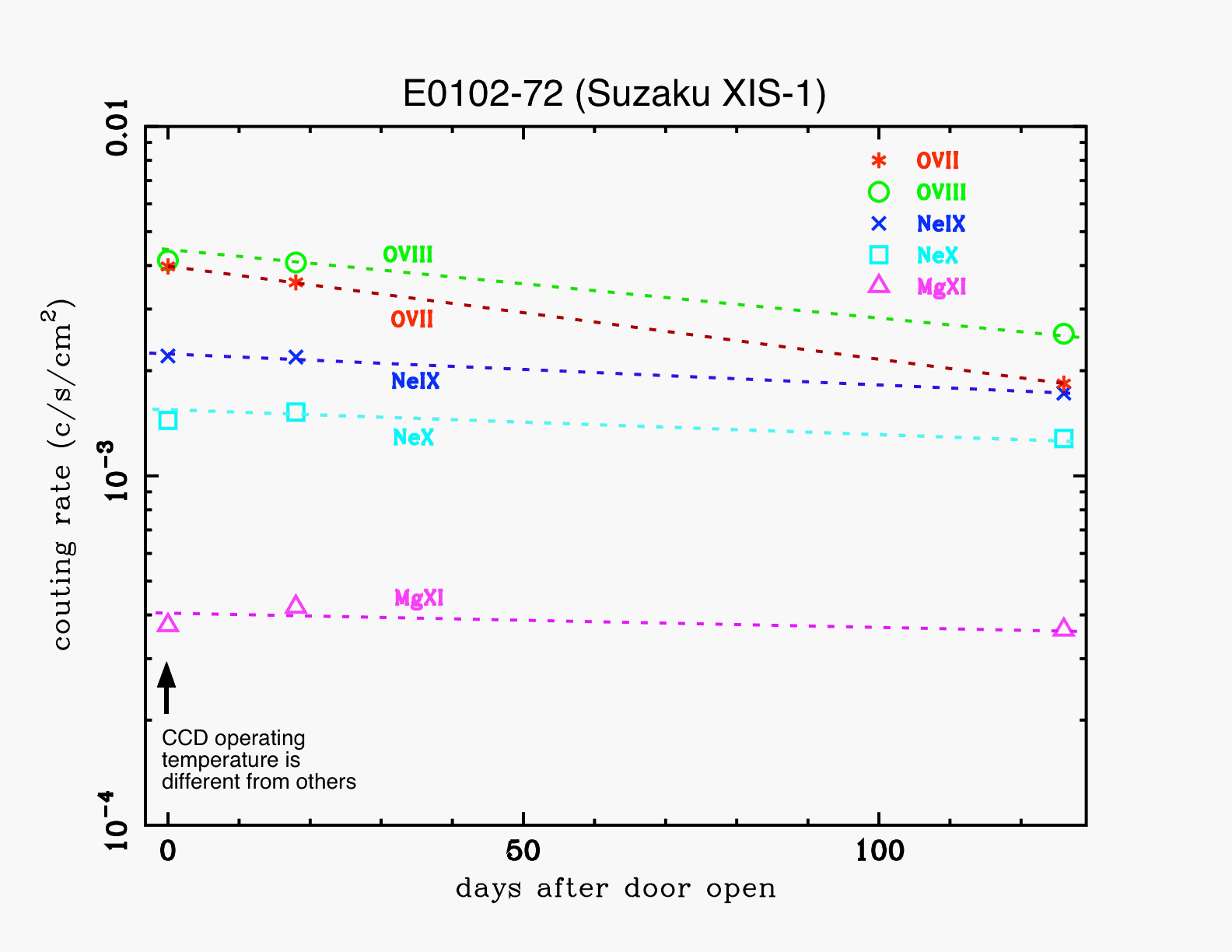Low Energy Efficiency of Suzaku
December 20, 2005
The good low energy response of the back illuminated (BI) CCD, i.e.
the high detection efficiency and the gaussian-like good energy
spread function, is an important unique feature of
Suzaku. However,
we recently found evidence that the effective area below 1 keV of
both back- and front-illuminated sensors is decreasing with time (see
figures). On the average at 0.6 keV the
effective area is about 50% that just after launch. We are working
hard to understand the cause of decrease and to find possible
recovery methods. The present best estimate of the e-folding time
constant is 160 days at the OVII line
(570 eV), but it can be shorter at lower energies and is longer at
higher energies. However, at present we cannot predict the future
long-term behavior of efficiency well. Because of this we will put
the priority on the low energy observations as soon as possible
during AO1. And we will provide the response functions (rmf files) of
the XIS as of October 26, 2005 on the
Suzaku web page soon. Please
note in your proposal which response function is used to estimate the
observation times.
Please note that the energy resolution has not changed.
Best wishes,
Kazuhisa Mitsuda (ISAS/JAXA)
Hideyo Kunieda (ISAS/JAXA and Nagoya University)
Nick White (NASA/GSFC)


If you have any questions concerning
Suzaku, visit the
Feedback form.



